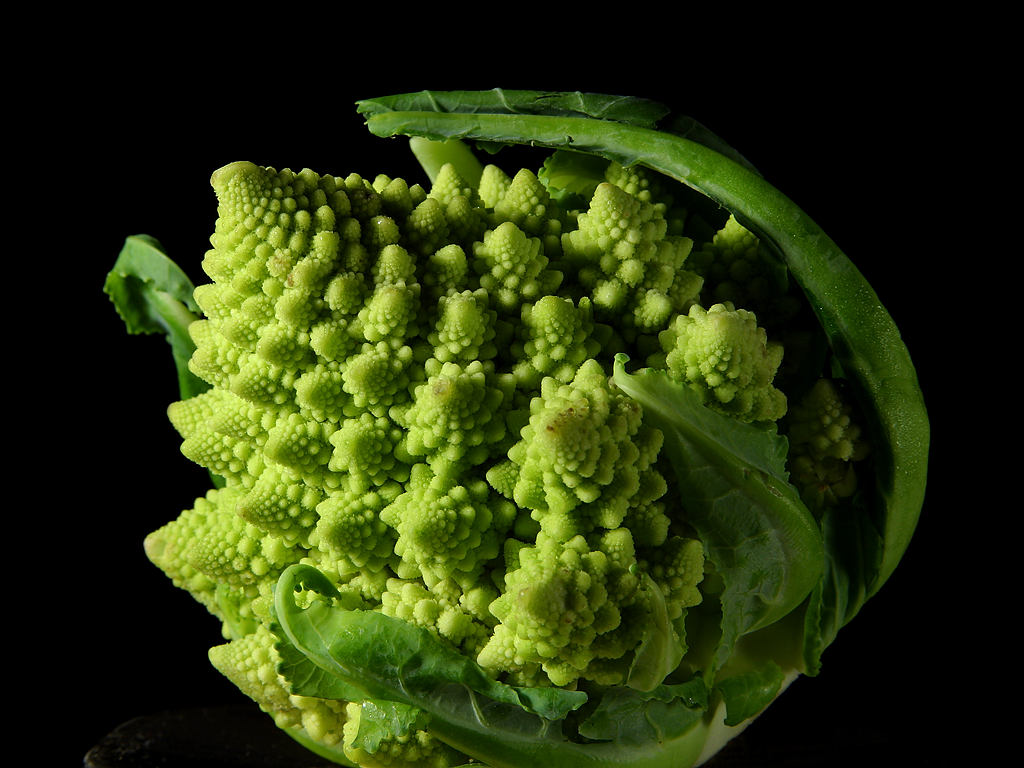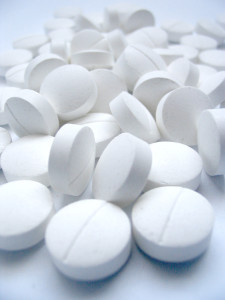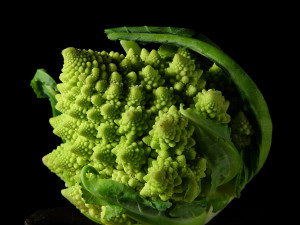 This post was originally published on Whole Health Wellness Center’s website.
This post was originally published on Whole Health Wellness Center’s website.

Sulfa, sulfur, sulfites, and sulfates are often confused for apparent reasons. Each of these also have the potential to cause adverse reactions in certain people. If you’re allergic to sulfa drugs should you be worried about sulfites? Why are sulfites in wine? Are they in all wine? Can you have a reaction to sulfur? What are the differences in reactions to sulfa, sulfur, sulfates, and sulfites? What should you avoid if you do have an allergy?
As a side note, sometimes these words are spelled with a “ph” instead of an “f” and they mean the same thing. (Sulfa = Sulpha, Sulfur = Sulphur, and Sulfite = Sulphite)
Sulfa
A “sulfa drug” is the shortened name for a drug containing a sulfonamide group (pictured). For those who haven’t taken organic chemistry or it’s been a few years, the S stands for sulfur, the Os are oxygen, the N is nitrogen, while the Rs stand for an organic group– where a carbon or hydrogen attaches. The overall structure is called an amide.
 What drugs contain sulfonamides (and are therefore considered sulfa drugs)?
What drugs contain sulfonamides (and are therefore considered sulfa drugs)?
Certain antibiotics are the most well-known sulfa-containing drugs, notably TMP/SMX, short for
trimethoprim/sulfamethoxazole and better known as Bactrim. Other non-antibiotic medications that are sulfonamides include some blood pressure medications (furosemide and hydrochlorothiazide for example), some medications used to treat diabetes called sulfonylureas (glyburide, chlorpropamide, gliclazide, glimepiride, tolbutamide), and rheumatologic agents (sulfasalazine, probenecid, celecoxib, valdecoxib), and other medications including sumatriptan, naratriptan, topiramate, ibutilide, sotalol, dapsone. This is not a complete list, so if you have any concerns with a medication you have been prescribed, talk to the prescribing physician. Having a reaction to one sulfa drug does not necessarily mean you will have a reaction to all of them. In fact, cross-reaction to different sulfonamide drugs is unlikely, believed to be due to structural differences, [1] [2] but we practice caution by avoiding prescribing any sulfa-based drug when there is a known allergy to one.
What allergic reactions happen with sulfa drugs?
Reactions to sulfa drugs can be quite severe including anaphylaxis and Stevens-Johnson syndrome (a life-threatening skin reaction), but more commonly seen are less severe reactions such as fever or rash occurring 1-2 weeks after exposure. Symptoms such as nausea and vomiting are not considered an allergic reaction. [2]
Who is more likely to have a reaction to sulfa drugs?
Allergies to sulfa drugs are relatively common at a prevalence of 2.2% in men and 3.4% in women. The increased incidence in women may be accounted for by the increased incidence in urinary tract infections seen and women and the frequent use of sulfonamide antibiotics to treat them. Women are then more exposed and more likely to know they have adverse reactions. [3]
If you have an allergic reaction to one type of drug, you are more likely to have reactions to others. This is a possible reason for some patients reacting to multiple drugs containing sulfonamides—they could actually be separate reactions. [2] Interestingly, patients who are HIV positive are 10 times more likely to have a sulfonamide allergy. [4] Other risk factors for having a reaction to a sulfa drug include genetic predisposition, [5] glutathione deficiency, [6] and current co-infection. [7]
Which sulfa drugs are the most likely to cause a reaction?
Antibiotic sulfa drugs are considered more likely than the non-antibiotic sulfa drugs to cause a severe reaction like anaphylaxis. [1]
Is there a test to see if you have a sulfa allergy?
No, there is not a specific test for a sulfa allergy, though a smaller test dose of a medication could be given prior to taking the full dose if there is concern.
Sulfite
Sulfites are compounds that contain the ion, sulfite. Sulfites are used to preserve foods such as dried fruit, pharmaceuticals, and beverages such as wine. Examples of sulfites include sodium sulfite, sodium or potassium salts of disulfite or metabisulfite, and sulfur dioxide (which isn’t technically a sulfite but is related and considered one by the FDA and for these purposes). [2]
Where else are sulfites found?
Baked goods, condiments, jams, molasses, gravy, dehydrated or pre-cut potatoes, shrimp and soup mix, beverages such as beer, wine, hard cider, fruit and vegetable juice, and tea. For a more complete list go to this link and scroll to the bottom of the page. Sulfites are also found in more than 1000 medications including epinephrine, dexamethasone, and topical drugs that can cause symptoms in some people.
What types of allergic reactions do people have to sulfites?
Asthma exacerbations are among the most documented sulfite allergies, but this has largely been studied in the context of reactions to wine. The number of reactions to sulfites is thought to have been overestimated as some of these asthmatic reactions are likely due to other components in wine. [8] Other adverse reactions to sulfites that have been reported include low blood pressure, abdominal pain, anaphylaxis, dermatitis, and hives. [9]
If you have a sulfa allergy do you need to avoid drugs that contain sulfites?
Having a sulfa allergy does not mean you need to avoid drugs containing sulfites, though you could be allergic to both.
Is there a lab test for sulfite allergy?
Yes, there are skin-prick tests, oral challenge tests, and other forms of testing available. Talk to an allergist if you think this type of testing is right for you.
What are the labeling laws with sulfites?
The FDA requires that food and beverages containing ≥10ppm sulfites must be labeled as containing sulfites. [10] In Australia, sulfites are labeled as “preservative 220.” [11]
What levels of sulfites are needed to cause an allergic reaction?
Looking at one study, even in fairly sensitive asthmatic patients only 4 of 24 had a reaction to extremely high sulfite levels (45mg dose from 300mg/L concentration). The lower dose (22.5mg or 150mg/L concentration) in this study did not produce a response. [8]
Who is more likely to be sensitive to sulfites?
It is estimated that up to 10% of people with asthma have a sulfite allergy. [4]
Preservatives are in a lot of things. Are sulfites NOT allowed in anything?
Why yes, they are not allowed on meat. Meats are a major source of B vitamins like thiamine (B1) but sulfites scavenge B vitamins. Sulfites can also give meat a false appearance of freshness. It can however be put in other ingredients that are added to meat in some processed foods. [12] Sulfites are also not allowed in fresh fruits and vegetables because there were cases of people with asthma reacting to them. It is however used as a fungicide on grapes but the residual amount needs to be less than 10 ppm. [13]
Sulfites & Wine
Wine headaches
You might be thinking, “You forgot to mention headaches as a reaction to sulfites, particularly in wine.” Well, clinical research does not have many documented cases of sulfites causing headaches. If you only notice this reaction to wine and not to other sulfite-containing foods, sulfites are probably not the issue. The Waterhouse article I cite a few times discusses this. He made a good point that many people who feel they have worse headaches with higher sulfite-containing wines very well may be reacting to something else that we haven’t yet pinpointed. His suggestion for a test would be to eat a 2-ounce serving of dried apricots which contain high levels of sulfites to see if you still get the headache. If you have a severe allergy or asthma exacerbations with sulfites, do not do this. Now you may be thinking, “Then why don’t I get headaches when I drink low-sulfite wines?” The answer to this does not appear to be determined yet, however…
If you only notice this reaction to wine and not to other sulfite-containing foods, sulfites are probably not the issue. The Waterhouse article I cite a few times discusses this. He made a good point that many people who feel they have worse headaches with higher sulfite-containing wines very well may be reacting to something else that we haven’t yet pinpointed. His suggestion for a test would be to eat a 2-ounce serving of dried apricots which contain high levels of sulfites to see if you still get the headache. If you have a severe allergy or asthma exacerbations with sulfites, do not do this. Now you may be thinking, “Then why don’t I get headaches when I drink low-sulfite wines?” The answer to this does not appear to be determined yet, however…
Here are some other theories to account for the wine headache:
One of the prime suspects for the wine headache is histamine intolerance. Wine is high in histamine and histamine production increases with alcohol consumption. Combine this with a genetic variant for an enzyme called diamine oxidase (DAO), the main enzyme responsible for metabolizing ingested histamine, and the result is high histamine which can lead to headaches. [14]
Like histamine, other amines such as tyramine found in red wine are metabolized a little differently by some people and may be a trigger for migraines. [15]
Wine headaches could also be exacerbated by sulfites scavenging for and depleting B vitamins.
Prostaglandins, which are involved in inflammation and contribute to symptoms such as pain and swelling, as well as tannins, which make wine drier, have also been considered possible culprits. The chances are, there are multiple triggers and since we have different genetics, immune systems, and other factors at play, people are likely reacting to different things.
Why does wine contain sulfites?
When wine is being fermented, yeast naturally produces sulfites. Additional sulfites are also added to better preserve the wine.
How much is 10ppm with respect to a bottle of wine?
10 ppm is 10mg per liter. A bottle of wine is 750mL, so for a wine to be able to avoid labeling for sulfites, they would need to have less than 7.5mg sulfites in a bottle.
What is the sulfite-content like in wine?
The average glass of wine contains about 10mg of sulfites however white wines tend to have more than red. The average bottle of European wine contains 80mg/L. [11]
Do sulfite-free wines exist?
All wines contain some amount of sulfites due to the nature of wine-making. There are lower-sulfite wines that do not add more sulfites as a preservative which include organic wines made in the US or “natural” wines made in Europe. These are more perishable and are often reported to have a different aroma. [11] Since these wines do not have the added preservative they do not get better with age. Naturally, wines have anywhere from 6-40mg of sulfites before more is added. [16]
If a wine says “made with organic grapes,” they may have added sulfites which must be disclosed on the label but it still cannot contain over 100ppm of sulfur dioxide (with other types of sulfites being prohibited). If a wine says “organic wine,” they are not permitted to add sulfites. [17]
Sulfate
Sulfate is an ion that is made up of sulfur and 4 oxygen molecules. Sulfates have wide industrial uses including in plaster, detergents, shampoos, toothpaste, and more. For specific concerns with these sulfates, the Environmental Working Group has summaries of evidence on each of them. The Environmental Working Group’s Skin Deep Database that scores their toxicity did not express concerns for allergic or immunologic toxicity. In my search I did not find cases of sulfate allergy but sulfates can be irritating to the skin and eyes. Certain drugs contain sulfates such as heparin, morphine, cortisporin ear drops, and dextran. Having a sulfa allergy does not mean you have to avoid these drugs.
Sulfur
Sulfur is the element with the symbol “S” and an atomic number of 16. It is  essential for all life. In the medical world it’s found in many places. Sulfur is found in sulfa drugs (sulfonamides) as well as drugs that are not considered sulfa drugs such as those containing sulfates mentioned above, amoxicillin (an antibiotic), spironolactone (used to treat high blood pressure), and omeprazole (for heartburn) for example. Sulfur is also part of the sulfite ion. It is in three amino acids and two B vitamins (thiamine and biotin). It is also part of the antioxidant glutathione. Sulfur is ubiquitous, so can you really have an allergy to the element sulfur?
essential for all life. In the medical world it’s found in many places. Sulfur is found in sulfa drugs (sulfonamides) as well as drugs that are not considered sulfa drugs such as those containing sulfates mentioned above, amoxicillin (an antibiotic), spironolactone (used to treat high blood pressure), and omeprazole (for heartburn) for example. Sulfur is also part of the sulfite ion. It is in three amino acids and two B vitamins (thiamine and biotin). It is also part of the antioxidant glutathione. Sulfur is ubiquitous, so can you really have an allergy to the element sulfur?
Reactions to sulfur
When people talk about reactions to sulfur it is typically a misnomer in the context of reactions to sulfa drugs, sulfites, or rarely sulfates, and not so much to the element itself.
There are genetic variations (meaning differences in DNA, inherited by your parents) that in clinical reports and in theory would cause people to not feel well when consuming larger quantities of sulfur. This is considered to be an intolerance reaction and not a sensitivity or allergy. The primary gene of concern here is called CBS, which stands for cystathionine-beta-synthase. The CBS gene produces an enzyme by the same name that catalyzes a reaction in the body involved in a process called transsulfuration. There is a well-established variation of this gene associated with Down’s syndrome where the gene is upregulated and too much of the enzyme is produced. CBS can be upregulated without Down’s syndrome as well. If CBS is upregulated, it would make sense that sulfur would not be tolerated as well.
This enzyme can also be impaired, which often results in elevated homocysteine. Homocysteine is frequently used as a risk marker for cardiovascular disease and can be elevated for different reasons, including other genetic variations (i.e. MTHFR). An outright CBS deficiency where both copies of the gene (one from each parent) are impaired is rare. This results in a condition not only with elevated homocysteine, but also more severe symptoms affecting the nervous system, connective tissue, muscles, and cardiovascular system. There aren’t many clinical studies regarding a pseudodeficiency in CBS gene function yet but we can test DNA for these variations and use the information in context of symptoms and other related genetic variations such as MTHFR and COMT.
 What are common sources of sulfur?
What are common sources of sulfur?
Sulfur is known for smelling like eggs so it probably comes as no surprise that eggs indeed contain sulfur. Other foods containing higher levels of sulfur include garlic, onions, leeks, and others in the Allium genus, as well as Brassica genus vegetables such as broccoli, Brussels sprouts, cabbage, bok choy, and cauliflower.
In Summation
Reactions to sulfa drugs are relatively common and vary in severity. If you have an allergy to one sulfa drug, you are actually not that likely to have cross-reactivity, but you are more likely to have reactions to more drugs in general.
Sulfite allergies can also vary in severity and are most frequently seen in people with asthma. Many people attribute the notorious red wine headache to sulfites, however this connection is not supported by evidence and there’s likely something else to attribute these symptoms to.
Sulfates have many industrial uses and are generally considered safe with no documented allergies, though they can be irritating to the skin.
Sulfur, found in many places including sulfa drugs, sulfites, and sulfates, is probably not the trigger in itself for these allergies. Sulfur consumption could affect symptom severity, for better or worse, in people with certain genetic variants.
Disclaimer: This information is not intended to be used to diagnose or suggest treatment for any condition. Please consult your healthcare provider before making any healthcare decisions or for guidance about a specific medical condition.
Works Cited
[1] D. Ponka, “Approach to managing patients with sulfa allergy,” Can Fam Physician, vol. 52, no. 11, pp. 1434-1438, 2006.
[2] C. o. P. &. Nutrition, “Sulfonamide Cross-Reactions Explained,” Saskatchewan Drug Information Services, vol. 20, no. 2, 2003.
[3] E. Macy, “A Practical Drug Allergy Update: What You Need to Know About Drug Allergies But Did Not Learn in Medical School,” Perm J, vol. 13, no. 4, pp. 64-67, 2009.
[4] C. D. H. Board, “Drug Information: Bulletins: Sulphur Allergy,” 2003. [Online]. Available: http://www.druginformation.co.nz/Bulletins/SulphurAllergy.pdf. [Accessed 28 February 2016].
[5] M. Rieder, N. Shear and A. Kanee, “Prominence of slow acetylator phenotype among pateints with sulfonamide hypersensitivity reactinos,” Clin PHarmacol Ther, vol. 49, pp. 13-17, 1991.
[6] E. Rose and W. McCloskey, “Glutathione in sensitivity to trimethoprim/ sulfamethoxazole in patients with HIV infection,” Ann Pharmacother, vol. 32, pp. 381-383, 1998.
[7] S. Tilles, “Practical issues in the management of hypersensitivity reactions: Sulfonamides,” South Med J, vol. 94, pp. 817-824, 2001.
[8] J. Vally and P. Thompson, “Role of sulfite additives in wine induced asthma: single dose and cumulative dose studies,” Thorax, vol. 56, pp. 763-769, 2001.
[9] H. Vally, N. Misso and V. Madan, “Clinical effects of sulphite additives,” Clin Exp Allergy, vol. 11, pp. 1643-51, 2009.
[10] FDA, “Electronic Code of Federal Regulations: Title 21: Food and Drugs,” 25 February 2016. [Online]. Available: http://www.ecfr.gov/cgi-bin/retrieveECFR?gp=1&SID=4bf49f997b04dcacdfbd637db9aa5839&ty=HTML&h=L&mc=true&n=pt21.2.101&r=PART#se21.2.101_1100. [Accessed 28 February 2016].
[11] A. L. Waterhouse, “Sulfites in Wine,” UC Davis, 2015. [Online]. Available: http://www.waterhouse.ucdavis.edu/whats-in-wine/sulfites-in-wine. [Accessed 28 February 2016].
[12] P. Grotheer, M. Marshall and A. Simonne, “Sulfites: Separating Fact from Fiction,” 2015. [Online]. Available: https://edis.ifas.ufl.edu/fy731. [Accessed 29 February 2016].
[13] F. A. R. G. a. R. Program, “Sulfites – USA,” University of Nebraska-Lincoln, [Online]. Available: http://farrp.unl.edu/sulfites-usa. [Accessed February 2016].
[14] L. Maintz and N. Novak, “Histamine and histamine intolerance,” The American Journal of Clinical Nutrition, vol. 85, no. 5, pp. 1185-1196, 2007.
[15] K. Dalton, “Food intake prior to a migraine attack – study of 2,313 spontaneous attacks,” The Journal of Head and Face Pain, vol. 15, no. 3, pp. 188-193, 1975.
[16] “Sulfite Free Wine,” Wines.com, 2014. [Online]. Available: http://www.wines.com/sulfite-free-wine/. [Accessed 28 February 2016].
[17] A. a. T. T. a. T. Bureau, “Labeling Organic Wine,” [Online]. Available: http://www.ttb.gov/pdf/wine-labeling-guide.pdf. [Accessed 28 February 2016].
